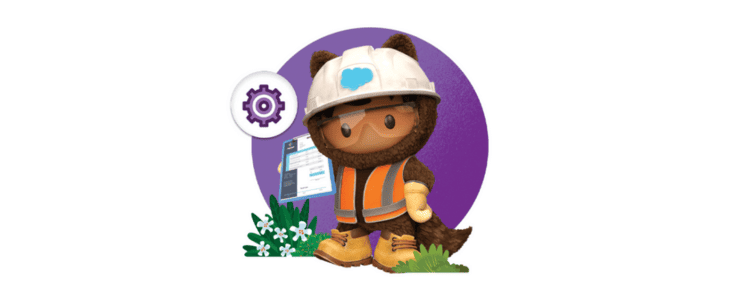Blog

How to Overcome SAP eCommerce Complexity to Create Great B2B Customer Experiences
Streamline workflows and make quotes with confidence while empowering employees with real-time integration between SAP and Salesforce
Key Takeaways:
- While manufacturers say that customer experience is important, their customer experience score is less than 50% compared to 65% to 85% satisfaction scores for B2C companies
- Distributors seem more tolerant of legacy systems, but to capitalize on the direct-to-business selling trend, manufacturers must step up their game
- A great customer service experience relies on a great employee experience. Unhappy and frustrated employees aren’t likely to go the extra mile for customers
- Bachem Holding AG discovered that their outdated legacy systems had to go and implemented SAP to complement their Salesforce CRM, but they were not integrated
- Because SAP and Salesforce were not integrated, Bachem continued to face the same problems they had with the legacy system: siloed data, inaccuracies, and unhappy employees.
- Using the enosix solution, Bachem’s data was united, quotes became accurate, employees had real-time customer information, and the company looks forward to a bright, efficient future.
Manufacturing CIOs are coming under increasing pressure to implement technology that provides a B2C-like eCommerce experience, one that’s personalized and frictionless. Distributors might not be complaining, but they would like an easier experience, too. If you want to capitalize on today’s direct-to-business trend, you must provide a modern customer experience.
B2B companies claim that customer experience is top-of-mind, yet they have an average customer experience score of less than 50%, quite a sad statistic in the face of the 65%-to-85% scores achieved by B2C companies. That being said, B2B customers have a more complex, highly customized, and often technical buying journey, and siloed information means friction for both customers and your employees.
The complexity of B2B eCommerce makes companies hesitant to do what’s necessary for an optimized customer experience. What company can afford months or even years of internal process optimization? Fortunately, a great customer experience is achievable practically overnight with an SAP-Salesforce integration – all it takes is the right partner. That’s what Bachem Holding, a worldwide provider of products and services for the pharmaceutical and biotechnology industry, discovered.
Areas of focus in B2B eCommerce
The pandemic threw everyone for a loop. Global supply chains were thrown into crisis, and companies scrambled to provide online buying experiences. While the pandemic might not be over, the focus now must shift to long-term solutions that give manufacturers an edge over their competitors.
It all begins and ends with unified data that provides all stakeholders a 360-degree view of the individual customer.
The omnichannel customer experience
The buyer’s journey usually involves customer interactions with your company through multiple channels. This often starts with a visit to your website, then calling the contact center, and later getting in touch via chat or email.
Your customer wants a consistent experience no matter what channel they are using. Creating a true omnichannel experience means uniting data company-wide so everyone internally understands individual customer needs. B2B companies have cut spending due to the pandemic, but many feel that digital transactions are two-to-three times more important to their business than traditional sales interactions moving forward. A strong omnichannel experience is not only expected but crucial.
The employee experience
A great customer experience starts with a great employee experience. Engaged employees, empowered with the data they need, want to not only provide better customer service but are also more likely to go above and beyond to provide a superior experience. A truly effective employee experience means giving them the tools they need to work in the best way possible. As Bachem Holding found out, employees become frustrated and unhappy when information is difficult to find and collaboration becomes complicated.
In Bachem’s case, their CRM was Salesforce and customer quotes were done in SAP. That means managing the opportunity in Salesforce, but quotes had to be generated by SAP, which meant a great margin for error. After that, there was a manual review and approval process, and then everyone crossed their fingers that everything was aligned in both systems. There was no single source of truth.
The personalized customer experience
Every single one of your customers has their own unique situation, requirements, and preferences. B2B customers are also consumers, and they want the same experience they get in their personal B2C transactions. The goal is to not only sell, but to advise, and to do that, both sales and customer service teams need complete customer data. Personalizing the selling and buying experience can build new relationships and strengthen old ones.
Data, data everywhere
One of the biggest issues for any company looking to improve the customer experience is siloed data. Your business might have the best solutions for a customer’s problems, but unlike the unified expert team that works to make the sale, data is scattered.
Bachem Holding had this problem. Bachem is a Swiss technology company active in the fields of chemistry, biochemistry, and pharmaceuticals, developing products and services for the pharmaceutical and biotechnology industries, as well as for research.
While Bachem had the brainpower within its 1,400 employees working around the world, it lacked a system that integrated all available data into a usable, searchable, streamlined, cohesive unit. In real life, the people behind the sales work together, yet they struggled with a system that didn’t give them the data they needed from the ERP, which made it difficult to sell to and service customers.
Like many manufacturers, Bachem had a legacy ERP system that was old, and no further customization was possible. They were using Salesforce and decided to adopt SAP as their new ERP tool. The two powerful systems were working, but not together.
Integration in weeks, not months (or years)
Using the enosix solution, within weeks, Bachem’s front-end and back-end systems were united to very positive employee and customer feedback. While the customer’s projects are still complex, the seller and buyer journeys are not: There’s now a single user interface with all of the customer data in real-time.
Quotes can be done quickly, with accurate customer-specific pricing, and reviewed through an efficient workflow. Orders are streamlined, and information is at the fingertips of customer service agents.
By integrating Salesforce with SAP ERP, enosix gives both your employees and your customers what they want in a B2B eCommerce site, and you get improved agility and reduced maintenance. Best of all, your initial integration will be completed in less than a month, so you can quickly pursue every exciting opportunity that comes your way with complete confidence.
The enosix integration solution – integration at the speed of business
Learn more about how enosix can help streamline your operations and provide the kind of B2B experience today’s customers expect. Schedule a demo today.


